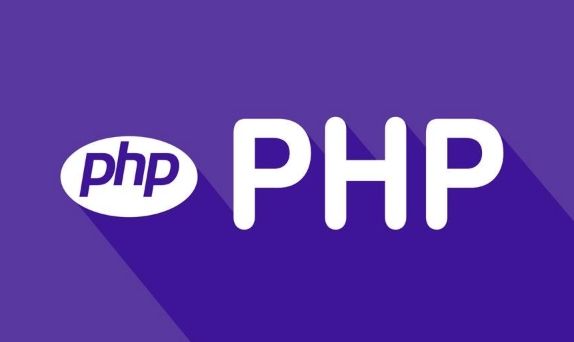 Backend Development
Backend Development
 PHP Tutorial
PHP Tutorial
 Describe the Use of `cURL` or `Guzzle` for HTTP Requests in PHP
Describe the Use of `cURL` or `Guzzle` for HTTP Requests in PHP
Describe the Use of `cURL` or `Guzzle` for HTTP Requests in PHP
Jul 11, 2025 am 02:25 AMHandling HTTP requests in PHP, cURL is suitable for projects that require underlying control and lightweight scenarios, and Guzzle is suitable for projects that pursue development efficiency and maintainability. 1. cURL is a built-in extension of PHP, suitable for scenarios where simple requests and no additional dependencies are required, but the code is cumbersome and error handling is complex; 2. Guzzle is a modern PHP library with good packaging, rich features, and supports PSR standards, which is easy to integrate into large applications or frameworks; 3. The selection basis is project complexity: use cURL for simple scripts, and choose Guzzle when complex systems or advanced functions are required.

In PHP, cURL and Guzzle are the two most commonly used methods. Simply put, if you need more underlying control, use cURL ; if you pursue development efficiency and code maintainability, choose Guzzle .

When should I use cURL?
cURL is an extension of PHP that provides a very low-level API to send HTTP requests. It is installed by default in most PHP environments, suitable for simple request scenarios or when you wish to use without introducing additional dependencies.
For example, you want to send a POST request to an API:

$ch = curl_init();
curl_setopt($ch, CURLOPT_URL, "https://api.example.com/data");
curl_setopt($ch, CURLOPT_POST, 1);
curl_setopt($ch, CURLOPT_POSTFIELDS, http_build_query([
'param1' => 'value1',
'param2' => 'value2'
]));
curl_setopt($ch, CURLOPT_RETURNTRANSFER, true);
$response = curl_exec($ch);
curl_close($ch);
echo $response; The advantage of using cURL is that it is lightweight and does not require additional installation packages, but the disadvantages are also obvious: the code is cumbersome and error handling is complicated, especially when you want to deal with redirection, authentication, upload files, etc., you have to manually configure a bunch of options yourself.
Common precautions:

- Remember to check whether the return value of
curl_exec()isfalse - Set
CURLOPT_RETURNTRANSFEROtherwise, the result will be output directly. - If you call the HTTPS interface, you may also need to set
CURLOPT_SSL_VERIFYPEER(not recommended to set to false)
Guzzle is more suitable for modern PHP development
Guzzle is a powerful and easy-to-use HTTP client library that encapsulates the underlying request logic so you can focus more on business logic than network details. It is a Composer manageable package, so you need to install it first via the command:
composer requires guzzlehttp/guzzle
Then you can use it like this:
use GuzzleHttp\Client;
$client = new Client();
$response = $client->post('https://api.example.com/data', [
'form_params' => [
'param1' => 'value1',
'param2' => 'value2'
]
]);
echo $response->getBody();It can be seen that the code is much concise and supports various advanced features, such as middleware, asynchronous requests, automatic JSON parsing, etc.
Advantages summary:
- Clear syntax and easy to read
- Supports PSR standards for easy integration into modern frameworks (such as Laravel)
- The exception mechanism is perfect, debugging is easier
- Built-in common functions (such as query parameters, form submission, JSON data, etc.)
How to choose? Depend on project requirements
If your project is simple, like just a timed script or gadget, then cURL is enough, after all, there is no need to install extras.
However, if HTTP requests are frequently initiated in large applications, or functions such as retry, logging, authentication, asynchronous concurrency are required, Guzzle is obviously more suitable.
For example:
- Make a simple weather interface call → cURL
- Connect multiple third-party services in Laravel and handle exceptions uniformly → Guzzle
In addition, some frameworks (such as Symfony or Laravel) already have built-in support for Guzzle, and it is not consistent to continue using cURL at this time.
In general, whether to use cURL or Guzzle in a PHP project depends on your specific needs. Both can complete tasks, but the applicable scenarios are different. Basically all that is it, just choose a convenient one according to the actual situation.
The above is the detailed content of Describe the Use of `cURL` or `Guzzle` for HTTP Requests in PHP. For more information, please follow other related articles on the PHP Chinese website!

Hot AI Tools

Undress AI Tool
Undress images for free

Undresser.AI Undress
AI-powered app for creating realistic nude photos

AI Clothes Remover
Online AI tool for removing clothes from photos.

Clothoff.io
AI clothes remover

Video Face Swap
Swap faces in any video effortlessly with our completely free AI face swap tool!

Hot Article

Hot Tools

Notepad++7.3.1
Easy-to-use and free code editor

SublimeText3 Chinese version
Chinese version, very easy to use

Zend Studio 13.0.1
Powerful PHP integrated development environment

Dreamweaver CS6
Visual web development tools

SublimeText3 Mac version
God-level code editing software (SublimeText3)

Hot Topics
 How to use PHP to build social sharing functions PHP sharing interface integration practice
Jul 25, 2025 pm 08:51 PM
How to use PHP to build social sharing functions PHP sharing interface integration practice
Jul 25, 2025 pm 08:51 PM
The core method of building social sharing functions in PHP is to dynamically generate sharing links that meet the requirements of each platform. 1. First get the current page or specified URL and article information; 2. Use urlencode to encode the parameters; 3. Splice and generate sharing links according to the protocols of each platform; 4. Display links on the front end for users to click and share; 5. Dynamically generate OG tags on the page to optimize sharing content display; 6. Be sure to escape user input to prevent XSS attacks. This method does not require complex authentication, has low maintenance costs, and is suitable for most content sharing needs.
 How to use PHP combined with AI to achieve text error correction PHP syntax detection and optimization
Jul 25, 2025 pm 08:57 PM
How to use PHP combined with AI to achieve text error correction PHP syntax detection and optimization
Jul 25, 2025 pm 08:57 PM
To realize text error correction and syntax optimization with AI, you need to follow the following steps: 1. Select a suitable AI model or API, such as Baidu, Tencent API or open source NLP library; 2. Call the API through PHP's curl or Guzzle and process the return results; 3. Display error correction information in the application and allow users to choose whether to adopt it; 4. Use php-l and PHP_CodeSniffer for syntax detection and code optimization; 5. Continuously collect feedback and update the model or rules to improve the effect. When choosing AIAPI, focus on evaluating accuracy, response speed, price and support for PHP. Code optimization should follow PSR specifications, use cache reasonably, avoid circular queries, review code regularly, and use X
 PHP creates a blog comment system to monetize PHP comment review and anti-brush strategy
Jul 25, 2025 pm 08:27 PM
PHP creates a blog comment system to monetize PHP comment review and anti-brush strategy
Jul 25, 2025 pm 08:27 PM
1. Maximizing the commercial value of the comment system requires combining native advertising precise delivery, user paid value-added services (such as uploading pictures, top-up comments), influence incentive mechanism based on comment quality, and compliance anonymous data insight monetization; 2. The audit strategy should adopt a combination of pre-audit dynamic keyword filtering and user reporting mechanisms, supplemented by comment quality rating to achieve content hierarchical exposure; 3. Anti-brushing requires the construction of multi-layer defense: reCAPTCHAv3 sensorless verification, Honeypot honeypot field recognition robot, IP and timestamp frequency limit prevents watering, and content pattern recognition marks suspicious comments, and continuously iterate to deal with attacks.
 PHP calls AI intelligent voice assistant PHP voice interaction system construction
Jul 25, 2025 pm 08:45 PM
PHP calls AI intelligent voice assistant PHP voice interaction system construction
Jul 25, 2025 pm 08:45 PM
User voice input is captured and sent to the PHP backend through the MediaRecorder API of the front-end JavaScript; 2. PHP saves the audio as a temporary file and calls STTAPI (such as Google or Baidu voice recognition) to convert it into text; 3. PHP sends the text to an AI service (such as OpenAIGPT) to obtain intelligent reply; 4. PHP then calls TTSAPI (such as Baidu or Google voice synthesis) to convert the reply to a voice file; 5. PHP streams the voice file back to the front-end to play, completing interaction. The entire process is dominated by PHP to ensure seamless connection between all links.
 How to use PHP to combine AI to generate image. PHP automatically generates art works
Jul 25, 2025 pm 07:21 PM
How to use PHP to combine AI to generate image. PHP automatically generates art works
Jul 25, 2025 pm 07:21 PM
PHP does not directly perform AI image processing, but integrates through APIs, because it is good at web development rather than computing-intensive tasks. API integration can achieve professional division of labor, reduce costs, and improve efficiency; 2. Integrating key technologies include using Guzzle or cURL to send HTTP requests, JSON data encoding and decoding, API key security authentication, asynchronous queue processing time-consuming tasks, robust error handling and retry mechanism, image storage and display; 3. Common challenges include API cost out of control, uncontrollable generation results, poor user experience, security risks and difficult data management. The response strategies are setting user quotas and caches, providing propt guidance and multi-picture selection, asynchronous notifications and progress prompts, key environment variable storage and content audit, and cloud storage.
 PHP realizes commodity inventory management and monetization PHP inventory synchronization and alarm mechanism
Jul 25, 2025 pm 08:30 PM
PHP realizes commodity inventory management and monetization PHP inventory synchronization and alarm mechanism
Jul 25, 2025 pm 08:30 PM
PHP ensures inventory deduction atomicity through database transactions and FORUPDATE row locks to prevent high concurrent overselling; 2. Multi-platform inventory consistency depends on centralized management and event-driven synchronization, combining API/Webhook notifications and message queues to ensure reliable data transmission; 3. The alarm mechanism should set low inventory, zero/negative inventory, unsalable sales, replenishment cycles and abnormal fluctuations strategies in different scenarios, and select DingTalk, SMS or Email Responsible Persons according to the urgency, and the alarm information must be complete and clear to achieve business adaptation and rapid response.
 Beyond the LAMP Stack: PHP's Role in Modern Enterprise Architecture
Jul 27, 2025 am 04:31 AM
Beyond the LAMP Stack: PHP's Role in Modern Enterprise Architecture
Jul 27, 2025 am 04:31 AM
PHPisstillrelevantinmodernenterpriseenvironments.1.ModernPHP(7.xand8.x)offersperformancegains,stricttyping,JITcompilation,andmodernsyntax,makingitsuitableforlarge-scaleapplications.2.PHPintegrateseffectivelyinhybridarchitectures,servingasanAPIgateway
 How to build a PHP Nginx environment with MacOS to configure the combination of Nginx and PHP services
Jul 25, 2025 pm 08:24 PM
How to build a PHP Nginx environment with MacOS to configure the combination of Nginx and PHP services
Jul 25, 2025 pm 08:24 PM
The core role of Homebrew in the construction of Mac environment is to simplify software installation and management. 1. Homebrew automatically handles dependencies and encapsulates complex compilation and installation processes into simple commands; 2. Provides a unified software package ecosystem to ensure the standardization of software installation location and configuration; 3. Integrates service management functions, and can easily start and stop services through brewservices; 4. Convenient software upgrade and maintenance, and improves system security and functionality.





